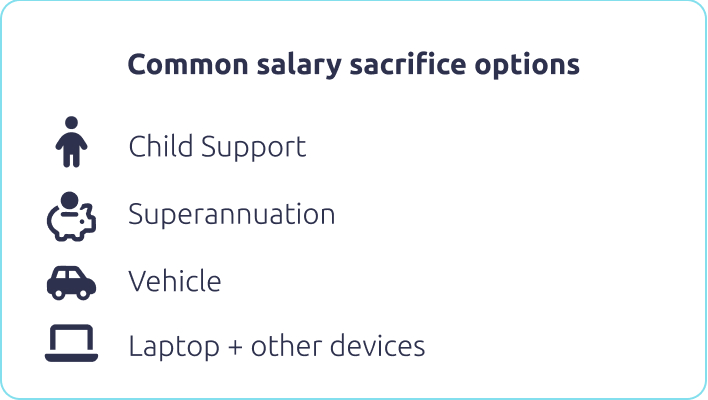When it comes to payroll, two common areas that often raise questions are salary sacrifice arrangements and child support deductions. On the surface, it may seem like salary sacrificing part of your income could reduce the amount of child support you owe. But under Australian law, the reality is very different.
This article breaks down how salary sacrifice works, how child support deductions are calculated, and what both employers and employees should know about their obligations.
What is salary sacrifice?
Salary sacrifice is an arrangement where an employee agrees to forgo part of their before-tax income in exchange for benefits of similar value. The most common example is salary sacrificing into superannuation, where an employee reduces their taxable income while boosting their retirement savings.
Other common salary sacrifice items can include vehicles (novated classes), laptops, or work-related devices.

What are child support deductions?
If an employee has a child support obligation, Services Australia may issue a Child Support Deduction Notice to the employers. This legally requires the employer to deduct a certain amount from the employee’s salary or wages and forward it to Services Australia.
Employers must:
- Deduct the correct amount specified in the notice.
- Pay it to Services Australia by the due date.
- Continue until the notice is withdrawn or varied.
Failure to comply can result in employer penalties.
Check out Services Australia child support guide.
Salary sacrifice does not reduce child support
Here’s where the confusion often arises:
Because salary sacrifice reduces an employee’s taxable income, some employees may assume it also lowers the income used to calculate their child support obligation.
However, Services Australia uses Adjusted Taxable Income (ATI) when assessing child support. ATI includes:
- Taxable income, plus
- Reportable employer superannuation contributions (such as salary sacrifice super)
- Fringe benefits and other adjustments
This means salary sacrifice does not reduce child support obligations. The sacrificed amount is simply added back when Services Australia calculates ATI.
Example:
- Employee earns $80,000 salary.
- They salary sacrifice $10,000 into super.
- Their taxable income is reduced to $70,000.
- For child support purposes, Services Australia adds the $10,000 back, so their ATI is still $80,000.
So, while salary sacrifice can be beneficial for tax and retirement planning, it does not lower child support obligations.
What employers should do
As an employer, your responsibilities are straightforward:
- Apply any salary sacrifice agreements correctly in payroll.
- Action any child support deduction notices exactly as instructed.
- Do not reduce child support deductions because of salary sacrifice.
- Maintain accurate records and provide payslips that clearly show gross pay, sacrificed amounts, and deductions.
Using a payroll software like Microkeeper makes this much easier, as it ensures both salary sacrifice and child support deductions are processed accurately and reported via Single Touch Payroll (STP).
Key Takeaways for Employees
- Salary sacrificing can help reduce taxable income and increase super savings.
- Child support is based on adjustable income, not just taxable income.
- Salary sacrifice amounts are added back when calculating child support, so obligations remain the same.
- Trying to use salary sacrifice to reduce child support is not effective and could cause compliance issues.
Final thoughts
Salary sacrifice is a powerful tool for financial planning, but it does not reduce child support obligations. Employers must continue to deduct the correct amounts specified in Child Support Deduction Notices, and employees should be aware that their obligations remain based on adjusted income.
By understanding the interaction between salary sacrifice and child support, businesses and employees can avoid misunderstandings, stay compliant, and focus on managing payroll accurately.
For more on salary sacrifice, see our Salary Sacrifice FAQ.
For employer guidance on child support, visit Services Australia.
Disclaimer: This article is for general information only and does not constitute legal, financial, or tax advice. Please consult the ATO, Services Australia, or a licensed professional for advice relevant to your circumstances.









